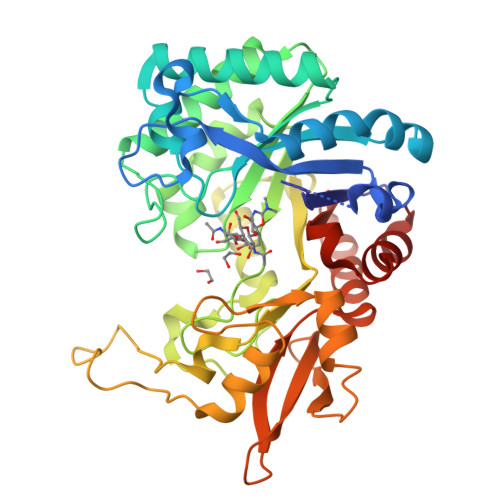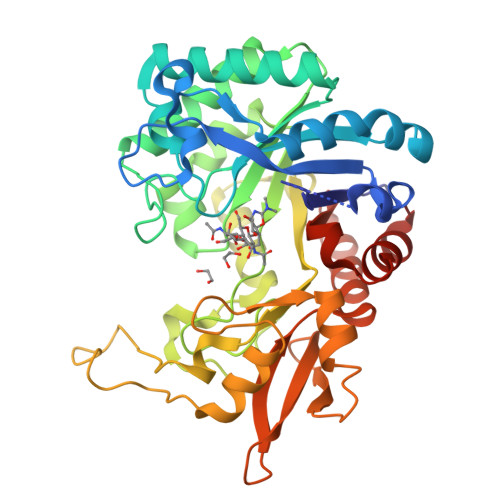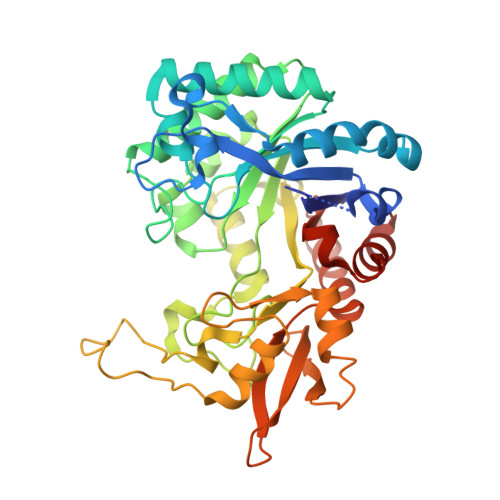Structural and Thermodynamic Signatures of Ligand Binding to the Enigmatic Chitinase D of Serratia proteamaculans.
Madhuprakash, J., Dalhus, B., Vaaje-Kolstad, G., Sakuda, S., Podile, A.R., Eijsink, V.G.H., Sorlie, M.(2019) J Phys Chem B 123: 2270-2279
- PubMed: 30789732
- DOI: https://doi.org/10.1021/acs.jpcb.8b11448
- Primary Citation of Related Structures:
6HM1 - PubMed Abstract:
The Gram-negative bacteria Serratia marcescens and Serratia proteamaculans have efficient chitinolytic machineries that degrade chitin into N-acetylglucosamine (GlcNAc), which is used as a carbon and energy source. The enzymatic degradation of chitin in these bacteria occurs through the synergistic action of glycoside hydrolases (GHs) that have complementary activities; an endo-acting GH (ChiC) making random scissions on the polysaccharide chains and two exo-acting GHs mainly targeting single reducing (ChiA) and nonreducing (ChiB) chain ends. Both bacteria produce low amounts of a fourth GH18 (ChiD) with an unclear role in chitin degradation. Here, we have determined the thermodynamic signatures for binding of (GlcNAc) 6 and the inhibitor allosamidin to SpChiD as well as the crystal structure of SpChiD in complex with allosamidin. The binding free energies for the two ligands are similar (Δ G r ° = -8.9 ± 0.1 and -8.4 ± 0.1 kcal/mol, respectively) with clear enthalpic penalties (Δ H r ° = 3.2 ± 0.1 and 1.8 ± 0.1 kcal/mol, respectively). Binding of (GlcNAc) 6 is dominated by solvation entropy change (- TΔ S solv ° = -17.4 ± 0.4 kcal/mol) and the conformational entropy change dominates for allosamidin binding (- TΔ S conf ° = -9.0 ± 0.2 kcal/mol). These signatures as well as the interactions with allosamidin are very similar to those of SmChiB suggesting that both enzymes are nonreducing end-specific.
Organizational Affiliation:
Department of Chemistry, Biotechnology and Food Science , NMBU-Norwegian University of Life Sciences , P.O. Box 5003, N-1432 Ås , Norway.


















